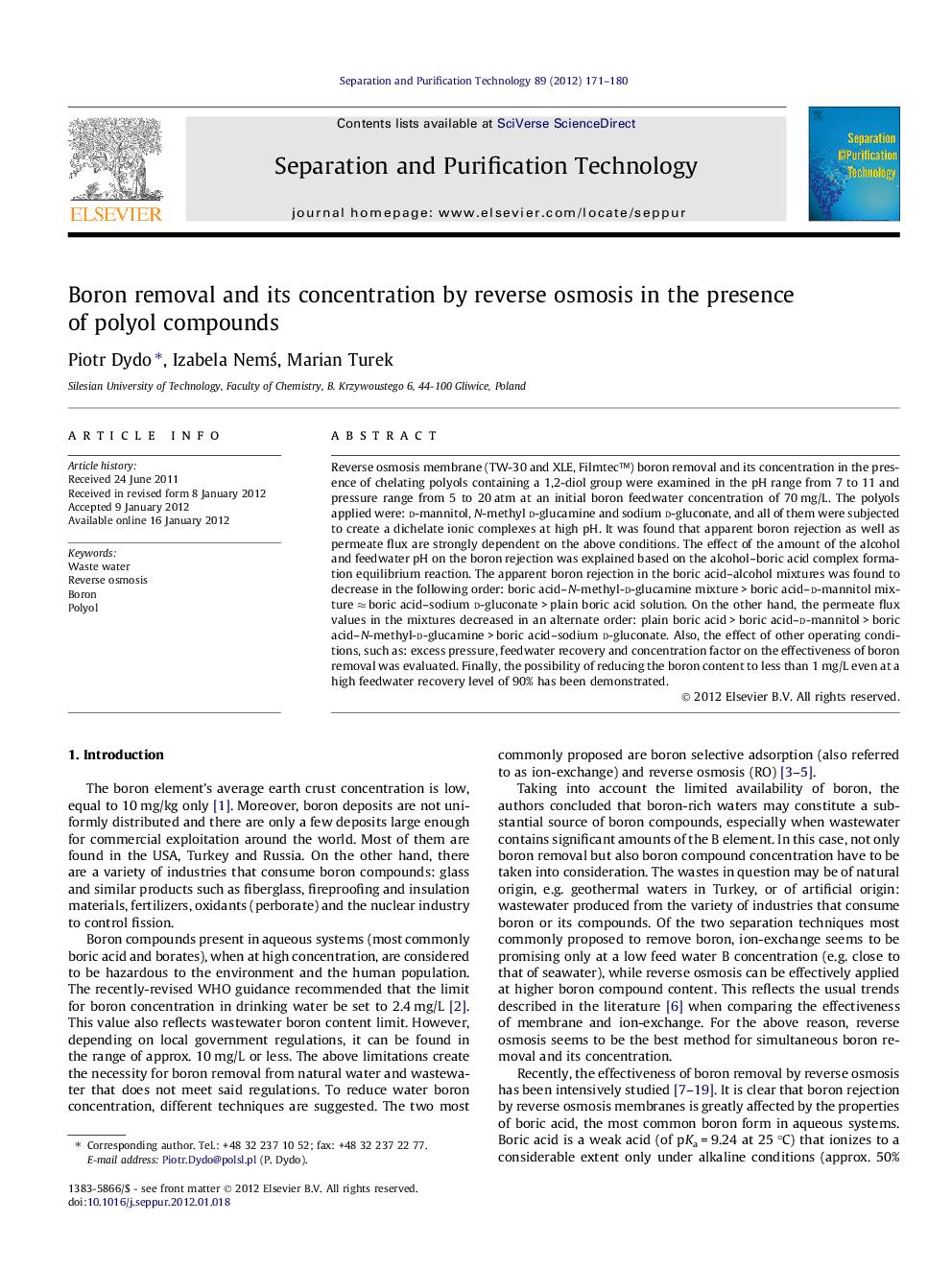| Article ID | Journal | Published Year | Pages | File Type |
|---|---|---|---|---|
| 642267 | Separation and Purification Technology | 2012 | 10 Pages |
Reverse osmosis membrane (TW-30 and XLE, Filmtec™) boron removal and its concentration in the presence of chelating polyols containing a 1,2-diol group were examined in the pH range from 7 to 11 and pressure range from 5 to 20 atm at an initial boron feedwater concentration of 70 mg/L. The polyols applied were: d-mannitol, N-methyl d-glucamine and sodium d-gluconate, and all of them were subjected to create a dichelate ionic complexes at high pH. It was found that apparent boron rejection as well as permeate flux are strongly dependent on the above conditions. The effect of the amount of the alcohol and feedwater pH on the boron rejection was explained based on the alcohol–boric acid complex formation equilibrium reaction. The apparent boron rejection in the boric acid–alcohol mixtures was found to decrease in the following order: boric acid–N-methyl-d-glucamine mixture > boric acid–d-mannitol mixture ≈ boric acid–sodium d-gluconate > plain boric acid solution. On the other hand, the permeate flux values in the mixtures decreased in an alternate order: plain boric acid > boric acid–d-mannitol > boric acid–N-methyl-d-glucamine > boric acid–sodium d-gluconate. Also, the effect of other operating conditions, such as: excess pressure, feedwater recovery and concentration factor on the effectiveness of boron removal was evaluated. Finally, the possibility of reducing the boron content to less than 1 mg/L even at a high feedwater recovery level of 90% has been demonstrated.
► RO membrane boric acid rejection when mixed with polyols at pH >7 was tested. ► Both the feedwater pH and polyol/boron molar ratio enhanced rejection. ► Filmtec XLE membrane rejected boron and B-polyol species more than TW-30. ► Permeate boron content was less than 1 mg/L even at high recovery. ► The possibility for boric acid concentration was proven.
